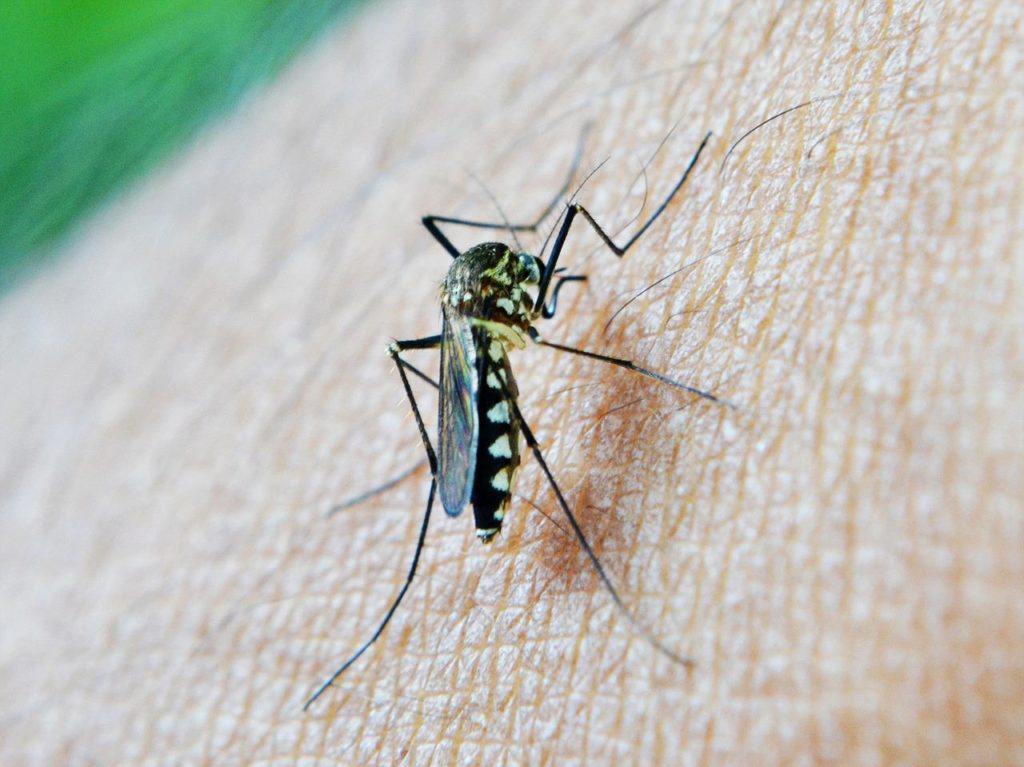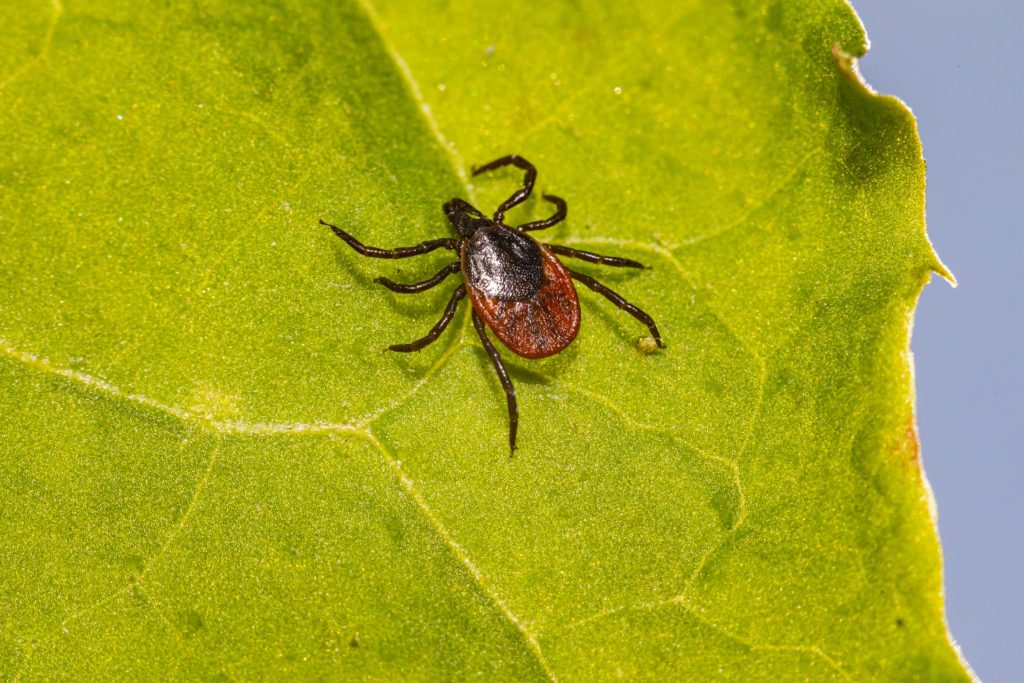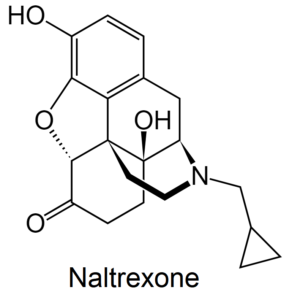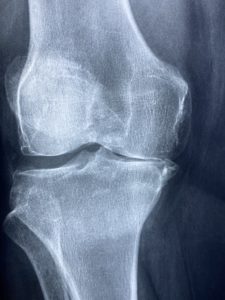Insect Repellants

While summer is fast approaching with outdoor activities and sunshine, it’s also the high season for bugs. Although they are often just a nuisance, some insects can also transmit serious disease. Mosquitoes and ticks are some of the most problematic, carrying different diseases that can vary by location. One of the simplest ways to stay safe is the use of bug repellent.
Currently, the EPA lists a number of approved options for repelling bugs. The list includes both synthetic and natural compounds:
- DEET
- Picaridin (Icaridin)
- IR3535
- Oil of Lemon Eucalyptus (Para-Menthane-3,8-Diol)
- 2-Undecannone
Data is also beginning to suggest some success with plant-based essential oils for repelling insects. However, they are not EPA approved as insect repellents.
DEET
DEET (N,N-diethyl-m-toluamide) is probably still the most familiar insect repellent to most individuals. Developed in the early 1940s by the U.S. Department of Agriculture and the military, it has been in use for many years. DEET is considered highly effective for repelling bugs (DeGennaro 2015). Other repellents are often compared to DEET as the gold standard. And while DEET is generally considered safe when used properly, there have been rare cases of death from overexposure and misuse (Swale 2019). However, in many of the reported cases, there were often other drugs that had been consumed which may have contributed to its lethality.
Other side effects of DEET may also be of concern (NIEHS 1999). And while rare, these side effects are not always benign. They can include topical effects, like itching and burning, skin eruptions and skin damage. Most skin reactions are due to allergic responses. Brain problems have also occurred from excessive DEET exposure, including tremors, coma and seizures. Excessive exposure can affect the heart, causing slowed heartbeat and breathing. In most cases, individuals that have experienced moderate to severe side effects from DEET have recovered. Considering the widespread use of DEET, serious side effects are rare and frequently related to overapplication or intentional ingestion.
On the flip side, animal studies do raise some concerns. These studies appear to show that normal use of DEET-containing products may lead to brain-based functional deficits, brain cell degeneration or brain cell death (Abdel-Rahman 2004, Abou-Donia 2001, Abdel-Rahman 2001). These findings indicate at least some neurotoxicity with DEET which may be of particular concern for children.
To help decrease risks of overexposure, DEET should always be applied after sunscreen. Combination products that include both insect repellent and sunscreen are not recommended. Applying DEET before or with sunscreen can lead to increased skin absorption (Ross 2004). While studies on DEET do raise some concerns, if it is the only insect repellent available to protect from disease carrying mosquitoes or ticks, it may be worth the risk. Always follow the product’s application instructions. While experts have differing opinions, if protection from insects is needed frequently, it may be worth considering options other than DEET.
Picaridin (Icaridin)
Picaridin (or Icaridin outside the United States) is another synthetic insect repellent that is commonly found in commercial products. In the United States it was introduced for use in 2005.
The biggest challenge with picaridin is the lack of data. While studies have shown similar efficacy to DEET for repelling insects (Fernandes 2021, Goodyear 2018), safety and toxicity data is not nearly as robust. A recent analysis of calls to U.S. Poison Control Centers for picaridin contained 282 reports. Of the cases, only one was admitted to a health-care facility for further evaluation and treatment. The rest of the cases recovered with only mild symptoms reported. Unlike DEET, picaridin has no odor, is fabric and plastic safe and appears to have less skin-irritation potential (Katz 2008).
The World Health Organization has published a full report on the toxicity of picaridin (WHO 2004). They do note two potential contaminants that can occur in picaridin formulations. These contaminants can act as sensitizers to topical allergens, which could, in theory, increase skin allergies with use. However, they state that the contaminants in tested samples were undetectable and the risk is likely minimal. It would be nice to see additional studies that also confirm low levels of contaminants. Unlike DEET, picaridin does not appear to cause coma, seizure and tremors, although cases of hallucinations and unconsciousness from overexposure have been reported. Fortunately, even these individuals recovered fully (Heng 2017).
IR3535 (Skin So Soft)
IR3535 is another synthetic insect repellent developed by Merck, originally produced as just a skin moisturizer. The available research on IR3535 is somewhat limited. Studies have found that the compound, when used in lower concentrations, is not as effective as other insect repellents used in higher concentrations (Carroll 2010, Frances 2009). However, when used in concentrations around 20% or more, studies indicate that IR3535 may be as effective as DEET (Cilek 2004).
IR3535 has little odor, but can irritate the eyes. It also can damage clothing and plastics (Nguyen 2018). Probably the best advantage of IR3535 is that it repels black flies, sand flies and midges or “no-see-ums” better than DEET (Diaz 2016). Available safety and toxicity data is minimal, but suggests low toxicity (Epstein 2012). However, it’s worth looking at other ingredients contained in Skin So Soft products alongside IR3535 as these ingredients may raise some toxicity concerns of their own.
Natural Options
Oil of Lemon Eucalyptus and p-Menthane-3,8-diol

Lemon Eucalyptus is a tree that grows in Australia. The essential oil from the tree contains low concentrations of a compound called p-menthane-3,8-diol or PMD for short. PMD and concentrated oil extracts of lemon eucalyptus containing high levels of PMD have been shown to effectively repel biting insects. While small quantities of PMD are found in lemon eucalyptus essential oil, PMD can also be made synthetically. It is also worth noting that essential oil of lemon eucalyptus is not the same as oil of lemon eucalyptus, which can lead to some confusion. Oil of lemon eucalyptus is an oil-based extract that increases PMD concentration.
Data on oil of lemon eucalyptus and PMD as insect repellents are promising (Carroll 2006). Studies have sometimes found that oil of lemon eucalyptus is more effective than commercial products containing lower percentages of DEET. Studies on PMD have also shown comparable results to DEET across numerous types of insects and research trials. However, products containing concentrations of 20% or more of PMD may be preferred due to greater efficacy over lower concentrations (Carroll 2006).
While PMD is a natural compound, it still may have some side effects. In general, the toxicity of oil of lemon eucalyptus and PMD appears to be low when used topically. The compounds can cause skin irritation and skin allergies in sensitive individuals, but do not appear to sensitize skin to other chemicals (EPA 2000). Intentional or accidental oral ingestion of oil of lemon eucalyptus and PMD could cause toxic side effects and should be avoided.
2-Undecanone
The chemical 2-undecanone is a constituent found in numerous plants. While originally derived from wild tomato, the compound is also manufactured synthetically. 2-undecanone has a significant odor, described as somewhat flowery and fruity.
While studies are very limited, the research available suggests similar efficacy between 2-undecanone and DEET for both mosquitos and ticks (Witting-Bissinger 2008). A separate trial against mosquitos that commonly carry malaria showed somewhat less but still significant efficacy as compared to DEET with 2-undecanone (Innocent 2008).
Toxicity studies in animals suggest low toxicity (Pubchem 2022). Due to the lack of published research, additional studies would be helpful to confirm the compound’s full safety.
Non-EPA Approved Repellents
A number of plant essential oils have demonstrated insect repelling effects. However, in general, their protection does not last as long as standard, EPA-approved options. Essential oils can evaporate more quickly leaving individuals unprotected if not reapplied regularly. Lemongrass, basil (Ocimum) species, eucalyptus species, peppermint, cinnamon and clove among others have all shown at least some potential (Nerio 2010).
While essential oils are natural, that does not automatically mean they are safe or non-toxic. Essential oils can cause skin irritation. They can also be toxic when used topically or consumed orally (Lanzerstorfer 2021). Children may be more at risk to negative effects from essential oils than adults (Plant 2019). In 2017, there were over 22,000 reports to U.S. Poison Control Centers for essential oils. Most exposures were accidental in children. Moderate or severe outcomes were mentioned in just under 1% of cases (Gummin 2018). In situations where protection from disease carrying insects is needed, insect repellents containing essential oils should be considered only as a last resort if other, more effective insect repellents are unavailable.
Conclusion
Biting insects are not only a nuisance, they can also carry serious diseases. Using effective insect repellents, either natural or chemical, can help to prevent disease transmission and keep bugs at bay. Due to the need for more data, it is hard to draw firm recommendations on many of the options available. However, based on concerns raised from animal studies, it would not be unreasonable to avoid DEET in children and in situations requiring long-term use. Always check labels to confirm any insect repellent is safe for use in children.



